The watermelon-like pattern on the leaves is what makes the watermelon peperomia so special. This is one of the must-have indoor plants to fulfill your collection.
We will tell you all about this unique plant in this article. It is important to know it before you decide to have it. Obviously, the name really implies the leaves that look like mini watermelon skin.
You can grow watermelon Peperomia (P. argyreia) easily. It becomes the reason why people like to have it as part of their indoor plant collection.
This is a perfect choice for you if you have just begun your gardening hobby.
How to Grow Watermelon Peperomia
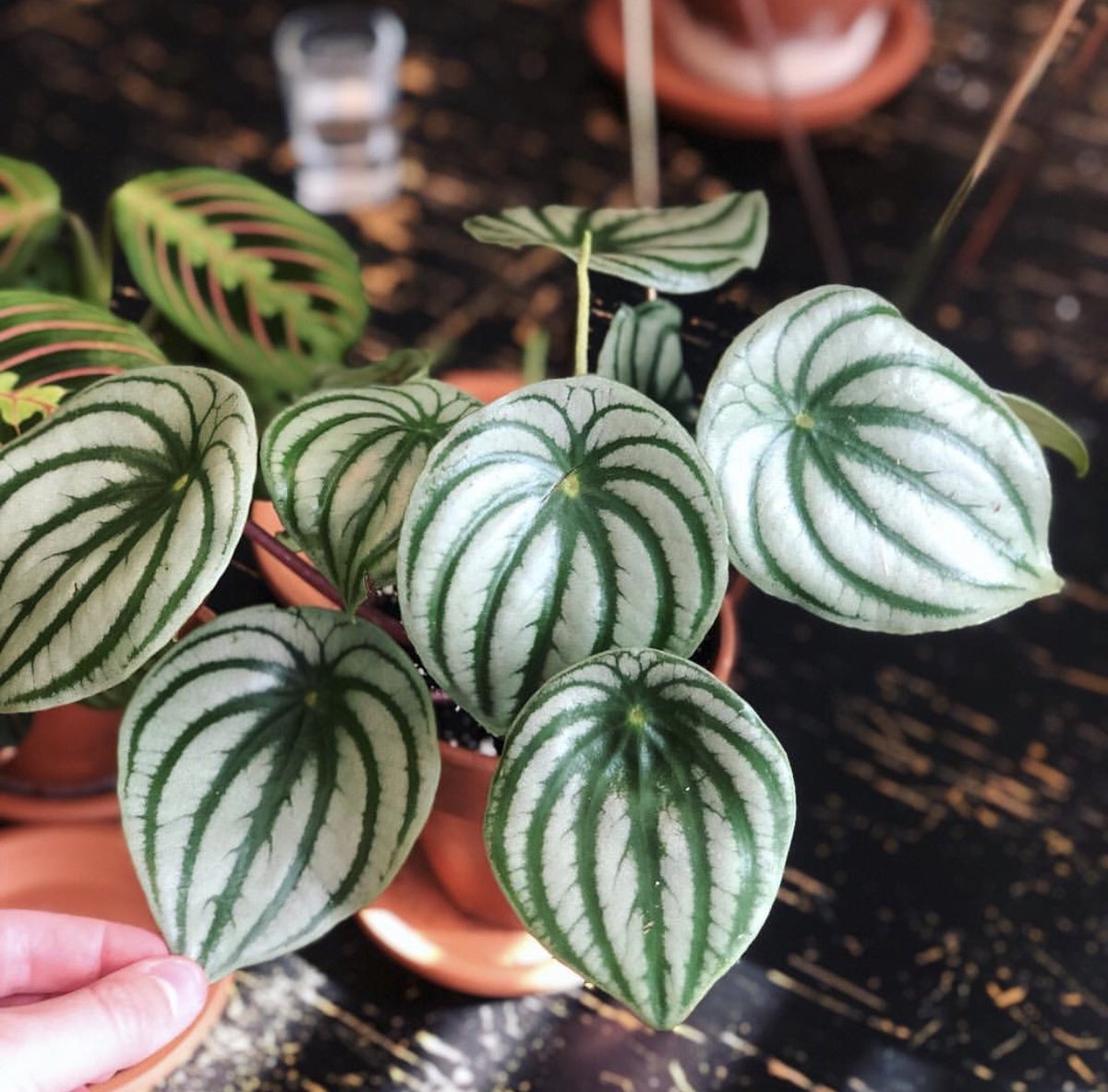
This elegant plant is native to tropical places in South America. It is a part of the Peperomia genus which is a slow-growing herbaceous perennial that can reach up to 6 to 8 inches tall.
Watermelon Peperomia can grow fast in the areas with 10 to 12 USDA hardiness zones. Many homeowners have it in a big pot and place it indoors.
They have to make sure the container is big enough to accommodate when the plant vigorously sprouts.
If you are interested in planting Watermelon Peperomia on your own, you might check out this guide.
1. Select The Right Pot / Container
Choosing the right container or pot seems to be an important part of the growing process. Actually, any kind of pot would be okay.
It depends on the preferences you have. Many gardeners recommend using hanging baskets since this variety can turn into a beautiful trailing plant.
It looks pretty as a decorative accent of your space. For beginners, it is better to choose the ordinary kinds of container for houseplants like the terra cotta pot.
This kind of pot would allow fast evaporation for the water. There will not be overwatering.
2. Remove Old Soil
This one is an optional step but it is quite important to give a fresh start for the roots system to grow. Removing the old soil would prevent pests like fungus gnats to develop and damage the plant.
During this dirt-removing process, you have to be gentle to prevent damage to its roots. Try using water.
3. Add Soil to the Bottom
Adding a few inches of soil down to the base of the container or pot will help the plant to get up to the height you want.
Try holding the plant inside at the desired height to check whether the soil is enough. Make sure the roots touch the layer of soil. Just add a little more when needed.
4. Place the Plant Inside
After removing all the old soil, the plant is ready to plant inside the pot. Keep holding up to it during the planting process.
Hold it to the desired height. Then, fill in the container with soil all around the plant. Press it down with fingers to make it compact and prevent pockets of air.
5. Water the Plant
The last part of this planting process is watering. Water the plant immediately.
How to Propagate Watermelon Peperomia
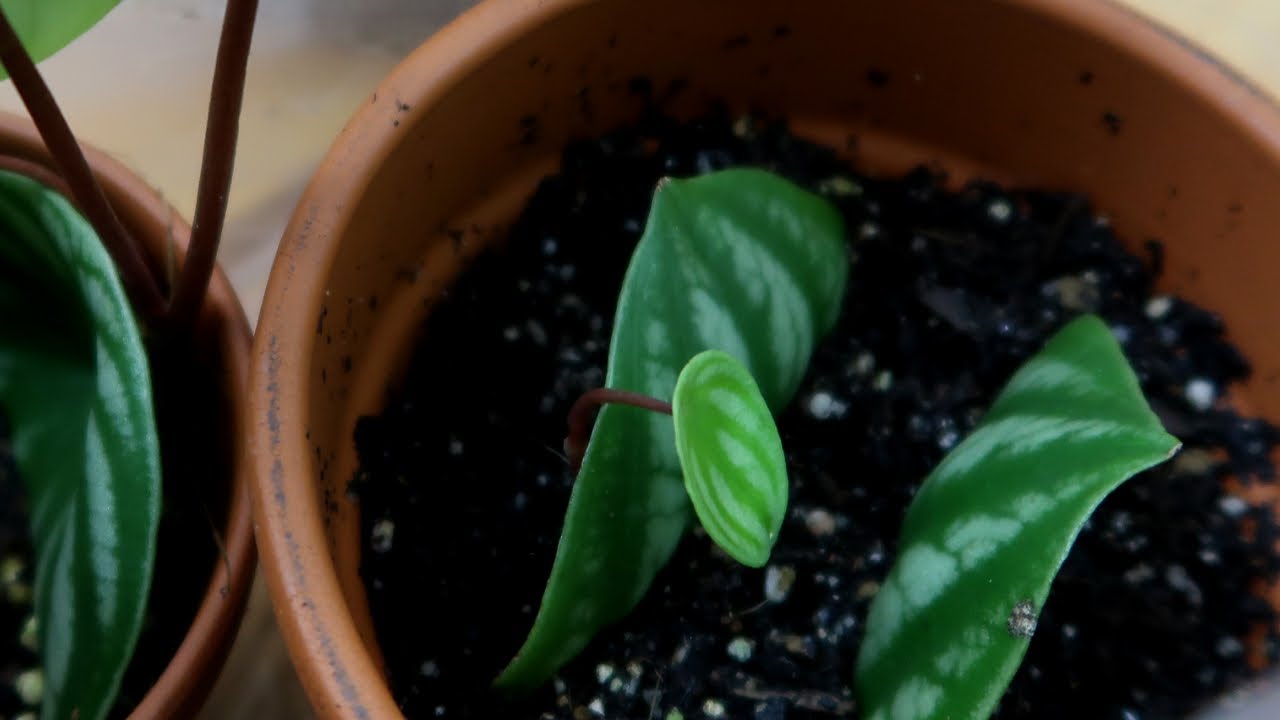
Propagating watermelon peperomia is not nearly impossible. As mentioned before, this plant is an easy-to-grow kind that you can even grow from a leaf or stem cutting.
To begin the propagating process, you need to cut a leaf or stem from the plant. After that, soak them in water inside a plastic bag. Wait for a few days until you see some roots come out.
Then, plant it in a container with enough holes for drainage. The soil needs to be permeable enough.
You can have a mix of peat, perlite, and sand as the ideal structure of soil for the development of the root.
Planting the cuttings in the soil is better than in the water. Because it makes the propagation more productive. There is a chance for the roots to create a strong support system for the plant.
It is so much better to cut the stalks which have some leaves. You can also use a rooting hormone solution to get the development process of the root faster.
Besides, there is always a chance to plant the Watermelon peperomia right from its seeds. Just place it in a seedling bed about 2.54 cm deep. Have them grown in the ground outside.
Watermelon Peperomia Varieties
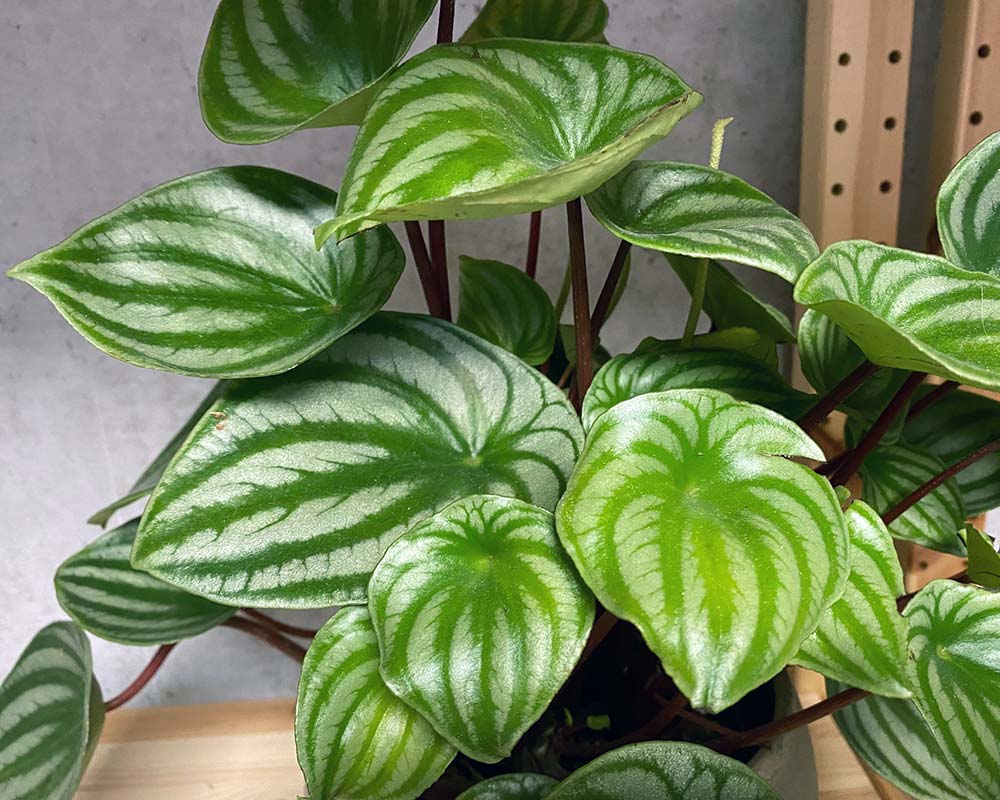
Watermelon Peperomia is one of the cultivars in the Peperomia family. This plant becomes a part of the Rosette Forming varieties.
Besides Watermelon Peperomia, there are other plants that are part of this variety that form attractive rosettes on the leaves.
- Silver Mount (Peperomia Griseoargentea), a bushy rosette of round cordate with glossy quilted leaves.
- Emerald Ripple (Peperomia caperata), a mounding plant that has heart-shaped leaves with forest or dark green color.
- Silver Heart (Peperomia Marmorata), the attractive heart-shaped leaves with a long point.
There many other varieties of peperomia. Many of them have become popular choices as part of indoor plant collection.
Watermelon Peperomia Care
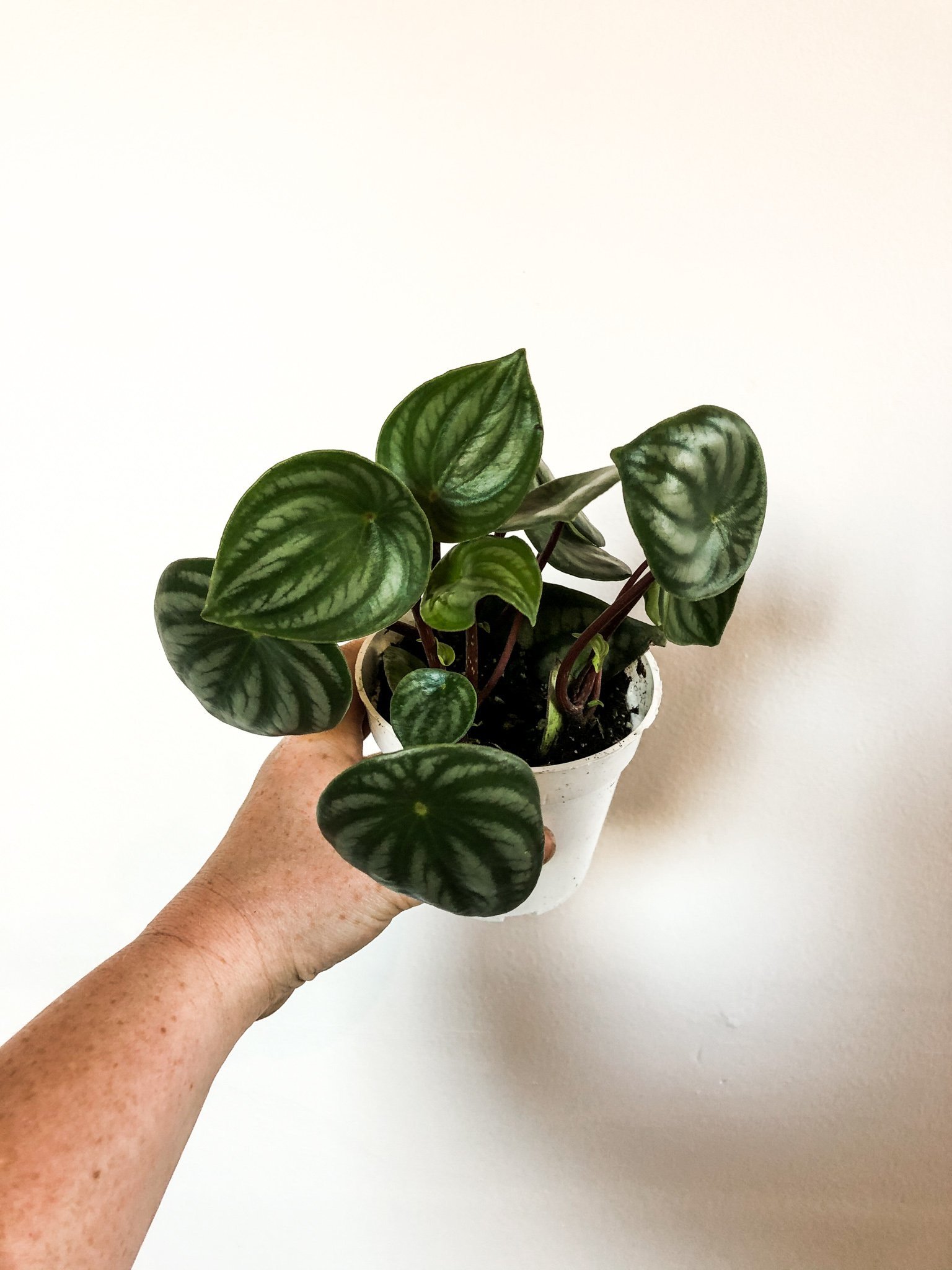
Growing Conditions
This type of peperomia is suitable for containers and hanging baskets. The most essential factor to consider is drainage. As said before, make sure there are some holes in the bottom of the pots.
Watermelon Peperomia can grow healthy in any commercial potting soil or DIY mixture that contains loam, peat moss, and compost. This easy-growing plant will not be a hassle to deal with.
The use of sand or vermiculite will give the great drainage it needs. It is better to avoid using the overly-fertile soil. Thus, it would make the peperomia grow excessively.
Sun Requirements
Watermelon Peperomia grows the best in indirect sun exposure. If you expose it with too much lighting, the beautiful bright shade will fade. It will not be something you expect on this houseplant.
Indoor seems to be the perfect place for the plant. If you have a window with exposure from the east, that would be perfect.
Moreover, for outdoor gardening, you have to make sure the plant is located in filtered light.
Watering Tips
As a tropical plant, peperomia is prone to stem rot in wet soil. So, it is important to water it deeply. Do it when you feel the soil surface a little bit dry. After watering, let the container drain completely.
Even though it needs soggy soil, it does not mean you can let the plant stand in water. If you have the plants outdoors, check them every day in warm weather.
During fall and winter, give more time to spare in between to let it dry a bit more. When the summer hits, set the pot on a humidity tray with wet pebbles.
Cold Temperature in Winter
Watermelon Peperomia cannot handle really cold conditions. So, if the plants are outdoors during warm weather, place them all inside the house at night.
Therefore, the temperature would drop drastically on a winter night.
Although Freezing temperatures will kill the plant, it is still able to handle cool weather. If the temperatures are below 50 F, the leaves will start to drop one by one.
Minimum Fertilization
Watermelon peperomia does not need to feed much. It is a light feeder houseplant. Absorbing too many nutrients will make it growing excessively.
It will lose its beauty since it will be a leggy, spindly plant. Besides, minimum fertilization is very important.
If you give the plant a lot of fertilizer, you will not be getting the compact, bushy plant you want. The best frequency for that is once in summer and spring.
Use the balanced, water-soluble product. The granular one would be too strong for the peperomia.
Pests and Diseases
It is an essential aspect to know about any plants. In fact, Watermelon Peperomia does not have any serious diseases.
However, spider mite, whitefly, and mealybug infestation can be a dangerous threat to the plant.
To deal with those pests, just remove them physically. Using a jet of water is also appropriate. Another thing you can do is to provide great ventilation in the area where you place the plant.
Troubleshooting
In order to deal with the problems, do some troubleshooting to the plant regularly. Check out the leaves, it will be looking a bit dull or washed out when the plant gets sunburned.
When you see the lower leaves dropping, it needs watering right away. It is better to place it in a small bowl full of water.
If you find the tips of leaves growing brown, it means you give too much water. So, stop the watering schedule for a couple of days.
The Benefits of Peperomia

In general, this variegated plant species bring some good benefits for people and the environment. There are so many types of peperomia that can do that for you and your house.
According to NASA research, this foliage can purify the air. Another study also reveals that Peperomia can decrease the level of formaldehyde by 47% for indoor areas.
That is a great thing for the air inside the house. Thereupon, this variety becomes a popular houseplant.
Most peperomia plants including the Watermelon also offer the same benefit. Besides, they look great as a natural decor of your rooms.
The Health Benefits
One of the most well-known peperomia plants for being nutritious is the Pellucida one. It uses often for salads or tea.
The leaves and stems have a good nutritional profile. This edible plant contains potassium, carbohydrates, protein, calcium, fat, iron, and beta carotene.
This plant is also known as the Shiny Bush because of its appearance. The following lists are some health benefits of Peperomia Pellucida.
- treats Rheumatoid Arthritis which is some kind of autoimmune disorder that affects joints.
- Cures Cancer because of the Peperomin E.
- Heals the Fracture.
- Reliefs Ulcer.
- Provides Powerful Antioxidant, Anti-Bacterial agent, Anti-Fungal, and Anti-Inflammation.
- Helps for Depression Treatment.
- Reduces Uric Acid.
- Treats gout and arthritis.
- Treat Problems in the urinary system.
- Lower Blood Cholesterol Level Effectively.
Watermelon Peperomia Benefits
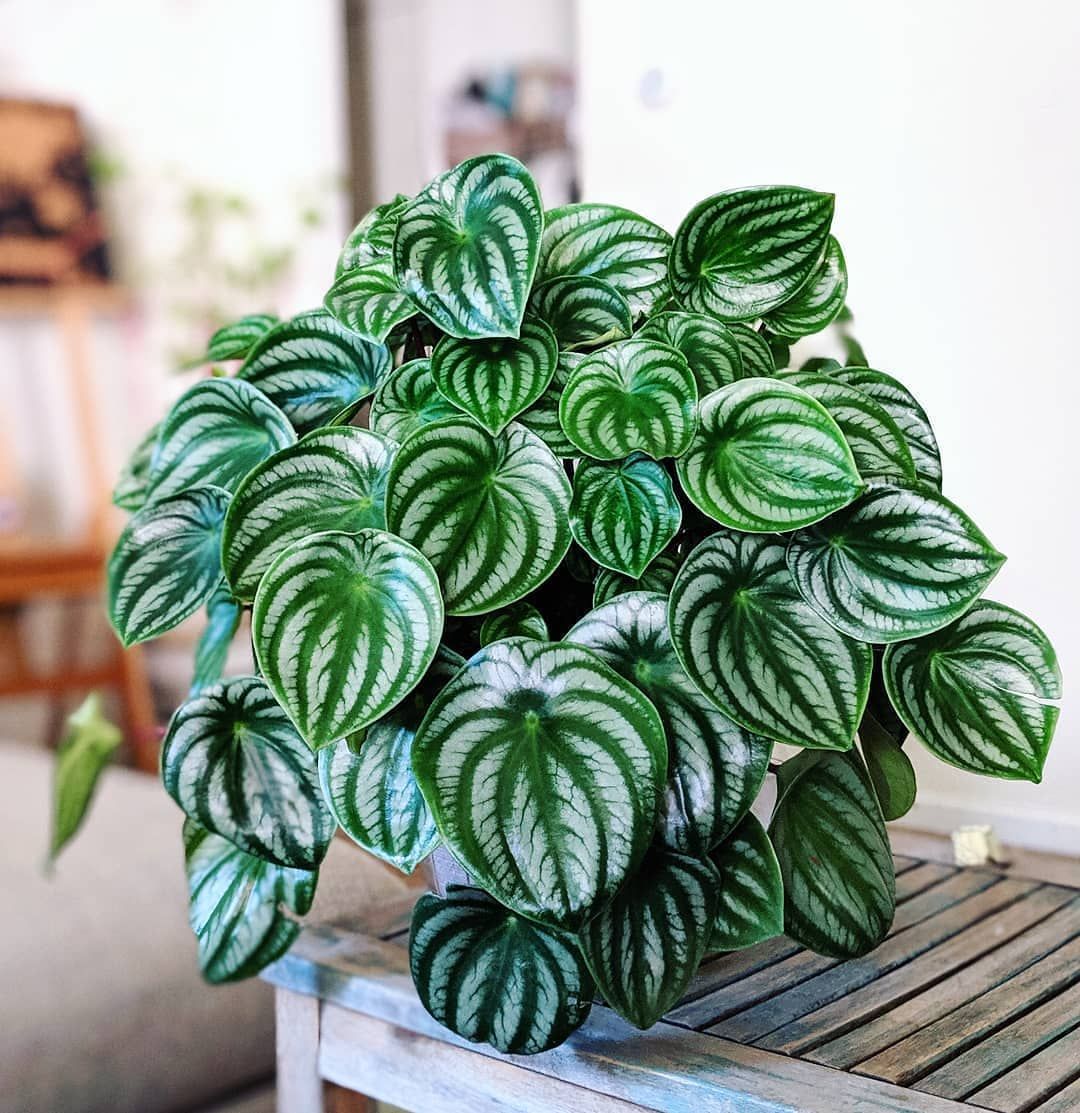
Easy to Grow
Nowadays, people want to have a plant that will not be a hassle to care for but offers a beautiful element to the house.
Well, watermelon peperomia is one of the easiest plants to grow. It is such a great one for beginners.
Indeed, other peperomias are also quite easy to grow. However, it is important to know the characteristics and how to take care of them.
We already provided the guides above for you who may want to start the planting after this.
Small Size and Large Leaves
Even though Watermelon peperomia is bushy and small, it can grow a lot of oval-shaped larger leaves. That is the beauty of it.
This friendly size means great portability. You can move this plant here and there anytime you want.
Every time you want to redecorate the room or take the plant outside for sunlight intake, there will not be a hassle.
Excellent Centerpiece
Shelves, tabletops, and desks will not be boring anymore with Watermelon peperomia. The beautiful pattern that resembles the fruit would look interesting for everyone.
It would make a great decoration for the coffee table, dining room, living room’s wall, and corners.
Healthy Air
As mentioned before, many peperomias including watermelon have the ability to reduce formaldehyde levels. Why we should concern about it?
If your house has a high level of formaldehyde in the air, the chance of having cancer is also increasing. It is important to have healthy air with a low level of this chemical compound.
Formaldehyde is made of oxygen, hydrogen, and carbon. So, where does it come from?
It comes from many things inside the house such as paints, thinners, composite wood materials, beauty products, combustible things, soft furnishings, and more.
Therefore, it is important to have houseplants that provide such benefits. Watermelon peperomia is one of them.
Conclusion
Watermelon peperomia is not the only option of the houseplant in this family of plants. However, you cannot find any other plants that resemble a fruit as good as this one.